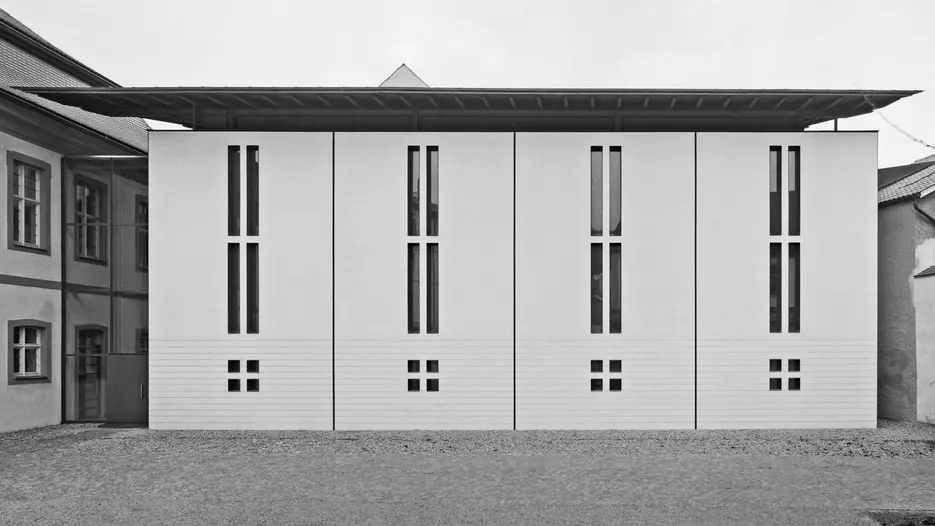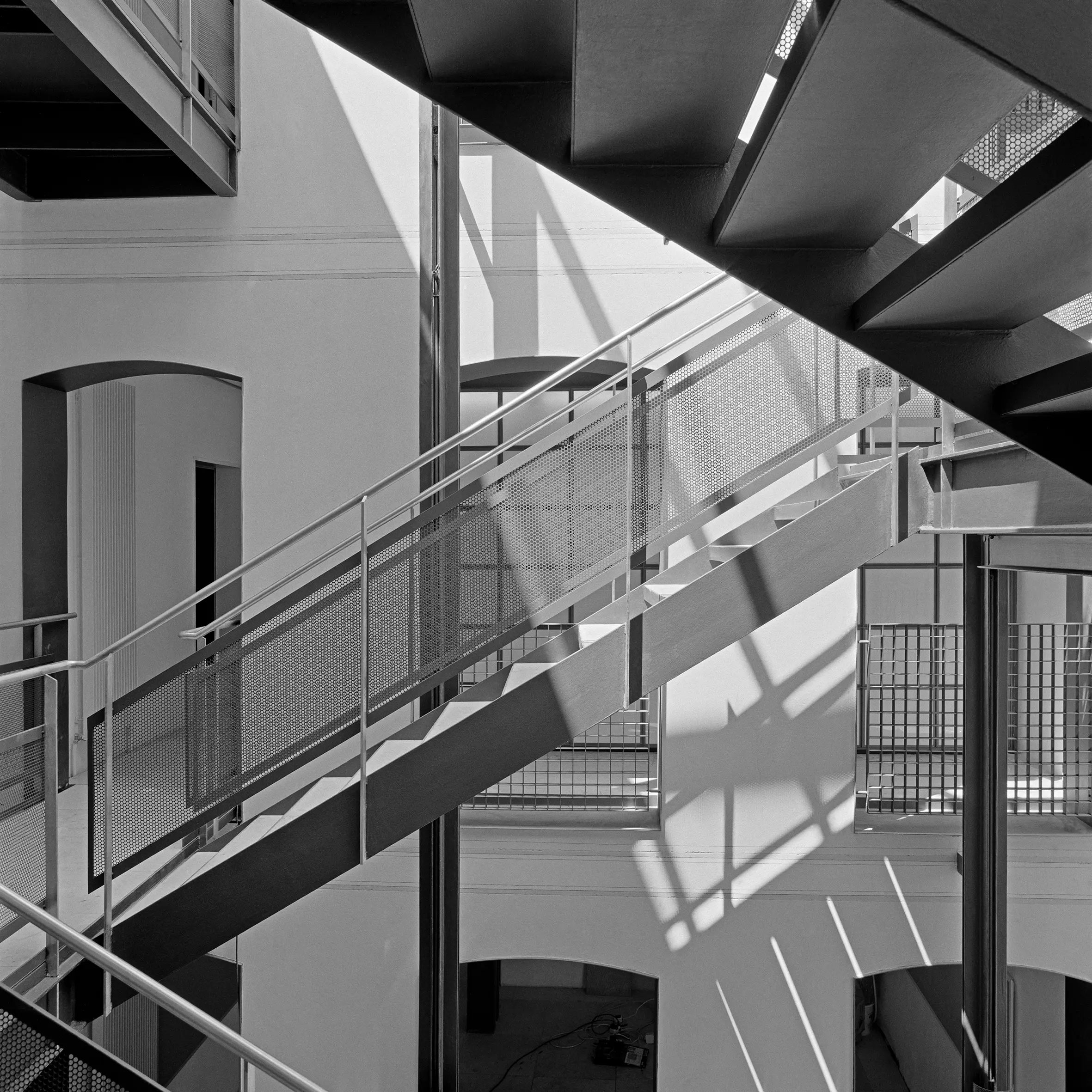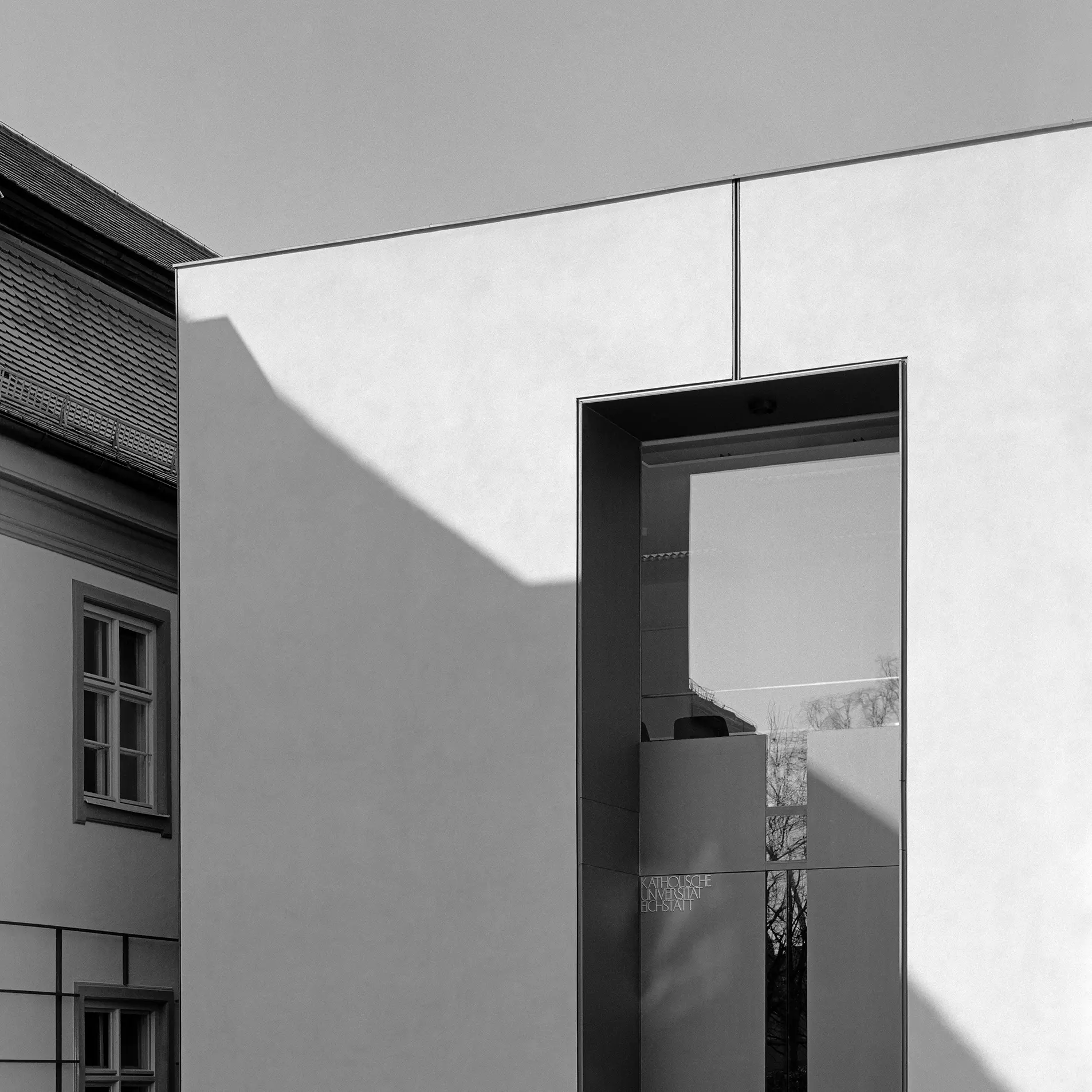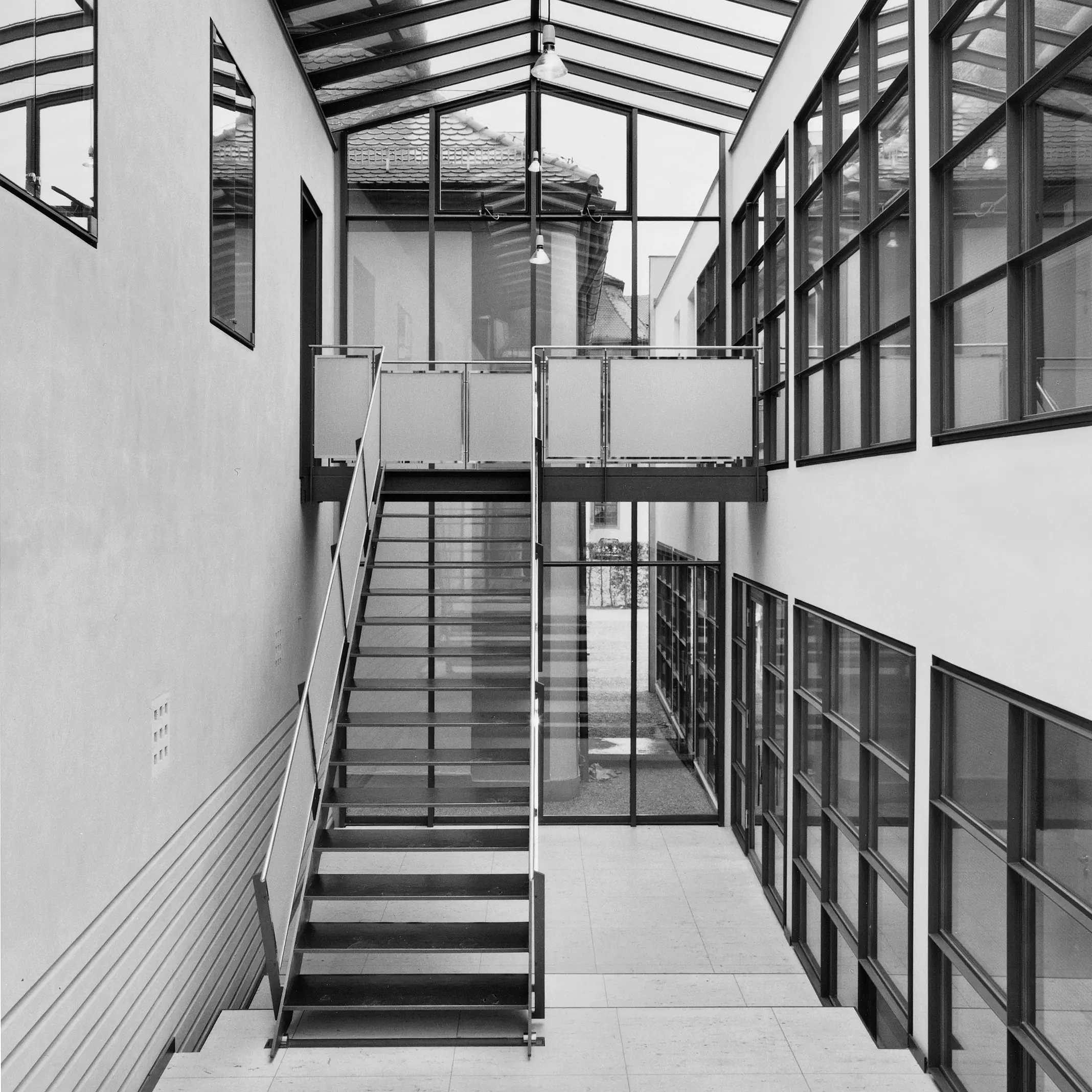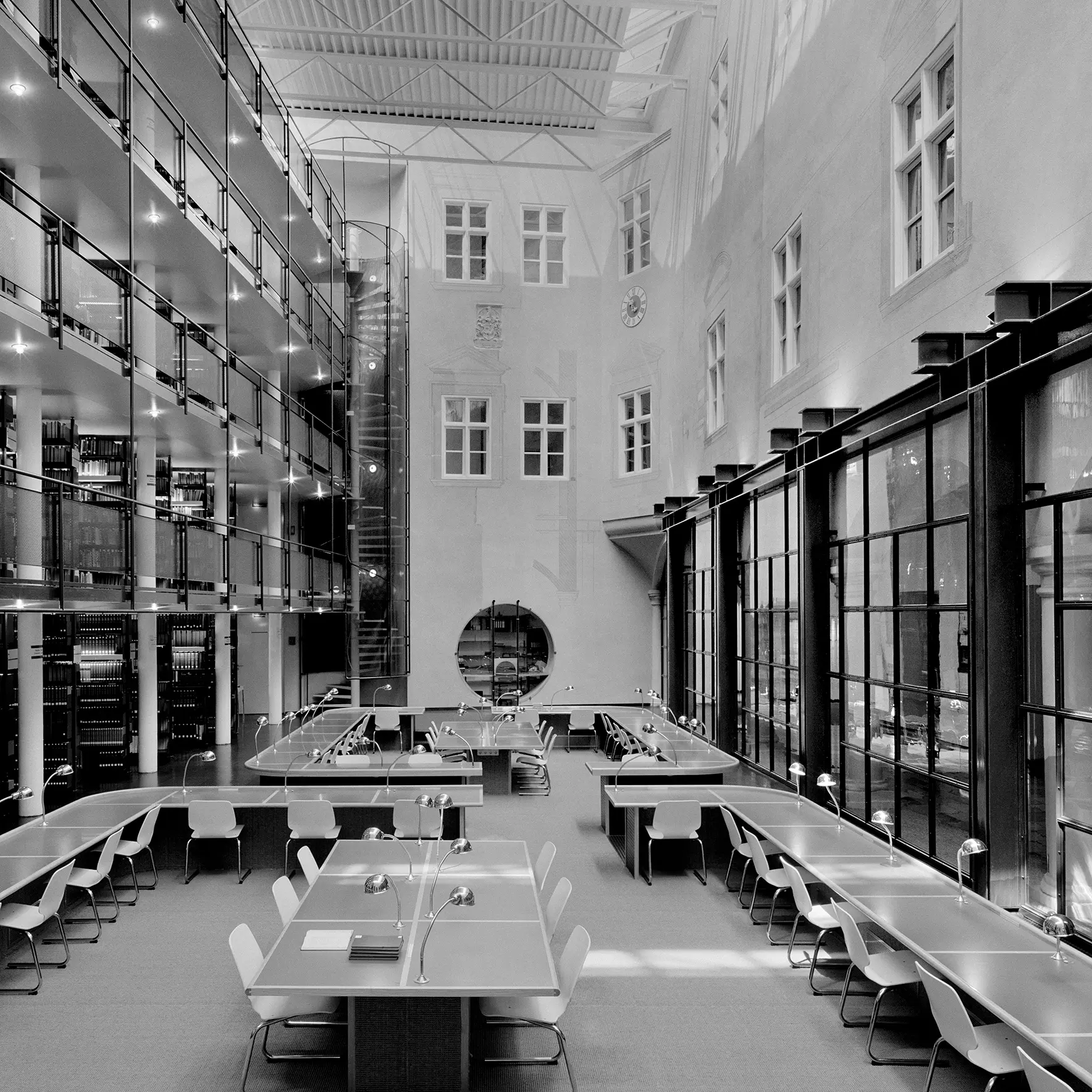For 35 years, from 1957 to 1992, Karljosef Schattner, born on August 28, 1924, in Gommern, was the diocesan and university architect in Eichstätt. After the master builders of the Middle Ages and the Baroque period before him, he, as the diocese's chief building official, helped the city architecture to flourish for the third time. Schattner left his mark on Eichstätt and made it world-famous (here is an overview of the most important buildings in Eichstätt). He managed to create the perfect symbiosis between baroque opulence and modern austerity, which is expressed in his preferred materials of steel, concrete, glass and perforated sheet metal. He brought these creative contrasts together in a separating manner, which was later referred to as the “Kunst der Fuge” ("art of the fugue") - loosely based on Bach.
Eichstätt celebrates Karljosef Schattner's 100th birthday

Schattner's architecture is a conversation between yesterday and today. This can be seen particularly well in the buildings he created for the University. Numerous facilities and departments of the KU are housed in historic buildings that have been successfully renovated, converted and supplemented with modern elements in an award-winning manner – tailored to the needs of university use. With these creations, Schattner demonstrated a genius that still captivates viewers today: A clear cube fits between the wings of the baroque former orangery. Steel spans the former orphanage. A modernist microcosm opens up in the magnificent Ulmer Hof building.
Karljosef Schattner worked in Eichstätt for several decades, so the various phases of his creative work and his changing architectural style can be traced on the Eichstätt campus: Starting with the Main Buildings, which he built in the early 1960s for what was then the teacher training college, as well as the Hofgarten library. They were followed by the conversion of the Ulmer Hof and the Sommerresidenz, the University’s main administrative building, as well as the construction of the new Catholic Campus Ministry’s student center in the 1970s. Schattner also renovated the building “ehemaliges Waisenhaus”, built the journalism media building, the building of the KU’s Geography Department and the canteen with cafeteria in the 1980s and 1990s. The entire Schattner ensemble on the KU campus is now a listed building, and last year the KU began renovating the Main Buildings.
All photographs by Klaus Kinold, Munich
The event program in the anniversary year
In the anniversary year, you can explore the unique world of architecture in Germany in a variety of ways: For example, on architectural tours or in the special exhibition "Die Kunst der Fuge" in the Cathedral Treasury and Diocesan Museum. Events are also planned at the KU. Concerts are dedicated to the work of the master builder in various musical ways and turn his buildings into a stage.
- Under the title "Schattner 100 – Die Kunst der Fuge", the Eichstätt Cathedral Treasury and Diocesan Museum opens its doors to a new special exhibition. The show is open from March 30 to October 31. In cooperation with the Klaus Kinold Foundation, it shows large-format black and white photographs of Schattner's most important buildings from the work of architectural photographer Klaus Kinold, including numerous shots of the KU campus. Documents also illustrate Schattner's work.
- Students of the Chair of Art Education and Art Didactics at the KU have explored Schattner's architecture in printed artworks . The graphics will be presented in the summer semester at an exhibition on the building fences around the KU's Main Building construction site.
- Karljosef Schattner's work will be honored with a ceremony on June 21 at 6 p.m. in the KU Aula to mark the 100th anniversary of his birth. The publicist and architecture critic Wolfgang Jean Stock will give the keynote speech, followed by a discussion with experts on "Schattner: yesterday – today – tomorrow". You can register here.
- Music in Schattner’s buildings: Vocal and instrumental ensembles from the KU and the Eichstätt Cathedral Music will sing and play music at a concert on June 20 from 8 p.m. on the Eichstätt campus of the KU and in the courtyard of the Haus der Kirchenmusik (Domplatz 9).
- As part of the Eichstätt Music Festival , which celebrates its tenth anniversary in 2024, musicians from the Frankfurt University of Music and Performing Arts are inviting visitors to a series of concerts on May 11 from 10 a.m. to 6 p.m. in the buildings designed by Schattner and his colleagues. More information and tickets are available at www.musikfest-eichstaett.de
- The Eichstätt Tourist Information Center offers several guided walks under the motto "Highlights of modern architecture". The focus is on the work of Karljosef Schattner. Schattner’s buildings that are otherwise not open to the public will also be part of the guided walk. Dates: April 14, June 23, August 25, October 27 (1:00 to 2:30 p.m.). Overview and tickets are available here.
- Photo competition: Post your photos of Schattner’s buildings on Instagram by October 1, 2024, and tag them with the hashtag #schattner100. The best pictures will be part of an exhibition in the Bildfläche gallery and have the chance to win a prize.
Download the full programhere.
